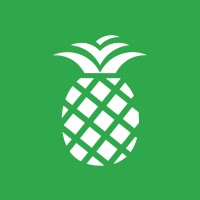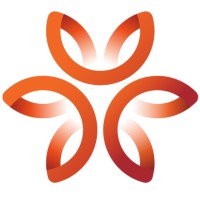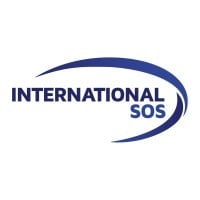
Conifer Health Solutions Company Cyber Security Posture
coniferhealth.comOver the last 35 years, Conifer has partnered with health systems, hospitals, physician groups, and employers to deliver tailored revenue cycle and value-based care solutions that drive successful outcomes and reduce the cost to collect. Conifer is a leading provider of technology-enabled services supporting over 670 clients and managing more than $35 billion (NPR) annually. The firm prides itself on having great people, who are not only revenue cycle and value-based care experts, but who care deeply about our clients and the communities they serve.
CHS Company Details
conifer-health-solutions
7109 employees
83135.0
62
Hospitals and Health Care
coniferhealth.com
Scan still pending
CON_2006325
In-progress
Between 800 and 900
This score is AI-generated and less favored by cyber insurers, who prefer the TPRM score.
 CHS Global Score
CHS Global Score.png)

Conifer Health Solutions Company Scoring based on AI Models
| Model Name | Date | Description | Current Score Difference | Score |
|---|---|---|---|---|
| AVERAGE-Industry | 03-12-2025 | This score represents the average cybersecurity rating of companies already scanned within the same industry. It provides a benchmark to compare an individual company's security posture against its industry peers. | N/A | Between 800 and 900 |
Conifer Health Solutions Company Cyber Security News & History
| Entity | Type | Severity | Impact | Seen | Url ID | Details | View |
|---|---|---|---|---|---|---|---|
| Baptist Health System | Breach | 100 | 6 | 06/2022 | BAP1568722 | Link | |
Rankiteo Explanation : Attack threatening the economy of a geographical regionDescription: Baptist Health System suffered a data breach incident after an unauthorized party gained access to the company’s computer network after installing a line of malicious code on the System’s website. The breach compromised the full names, dates of birth, addresses, Social Security numbers, health insurance information, medical information and billing information of more than 1.2 million patients in Texas alone and many more in other areas. The health system suspended the affected systems to restrict further access and began working with a cybersecurity firm to investigate the incident. | |||||||
| Detroit Medical Center | Breach | 85 | 4 | 07/2016 | DET849291022 | Link | |
Rankiteo Explanation : Attack with significant impact with customers data leaksDescription: The Detroit Medical Center suffered from a data breach of health information that exposed about 1,529 patients. The DMC notified to the individuals whose data was compromised and offered credit monitoring for affected patients. | |||||||
| Conifer Health Solutions | Breach | 80 | 4 | 08/2022 | CON23171122 | Link | |
Rankiteo Explanation : Attack with significant impact with customers data leaksDescription: Conifer Revenue Cycle Solutions, LLC (“we” or “Conifer”), a provider of revenue cycle management and other administrative services to healthcare providers, suffered a cybersecurity incident that affected its users' personal information. An unauthorized third party gained access to a Microsoft Office 365-hosted business email account and compromised certain information. The exposed information involved information to identify the individual (such as full name, date of birth, and address); (2) Social Security number, driver’s license/state ID number, and/or financial account information; (3) medical and/or treatment information (such as medical record number, dates of service, provider and facility, diagnosis or symptom information, and prescription/medication); (4) health insurance information (such as payor name and subscriber/Medicare/Medicaid number); and (5) billing and claims information. However, upon revelation, the email account was separate from Conifer’s internal network and systems, and those who were affected were notified. | |||||||
| Conifer Health Solutions | Cyber Attack | 85 | 4 | 08/2022 | CON1940201022 | Link | |
Rankiteo Explanation : Attack with significant impact with customers data leaksDescription: Conifer Revenue Cycle Solutions, LLC experienced a cybersecurity incident that may have affected your personal information. It is currently providing this notice on behalf of the healthcare providers. An unauthorized third party gained access to a Microsoft Office 365-hosted business email account. This email account is separate from Conifer’s internal network and systems, which were not affected by this incident. Personal information involved in this incident may have included one or more of the following elements full name, date of birth, and address, social security number, driver’s license/state ID number, and/or financial account information , medical and treatment information ,health insurance information and billing and claims information. | |||||||
| St. Mary's Medical Center | Ransomware | 100 | 7 | 04/2022 | STM12420522 | Link | |
Rankiteo Explanation : Attack that could injure or kill peopleDescription: Good Samaritan and the St. Mary’s Medical Center in West Palm Beach suffered a ransomware attack that crippled its phone and computer systems. The attack affect many of its systems and disrupted its acute care operations. However, the hospital staff did not clear if any patient data was compromised or if ransom was demanded. | |||||||
Conifer Health Solutions Company Subsidiaries

Over the last 35 years, Conifer has partnered with health systems, hospitals, physician groups, and employers to deliver tailored revenue cycle and value-based care solutions that drive successful outcomes and reduce the cost to collect. Conifer is a leading provider of technology-enabled services supporting over 670 clients and managing more than $35 billion (NPR) annually. The firm prides itself on having great people, who are not only revenue cycle and value-based care experts, but who care deeply about our clients and the communities they serve.
Access Data Using Our API

Get company history
.png)
CHS Cyber Security News
Healthcare IT Faces Disruption and Innovation Challenges as GOP Budget Cuts Loom: Insights From Black Book Weekly Survey
As Federal Budget Cuts Threaten Healthcare Systems, RCM Vendors and Providers Strategize for Resilience.
Financialization through Health IT, Part II: From Electronic Health Systems to AI
In Part II of this report, we review the developments of federal laws and regulations governing health IT since passage of the HITECH and Affordable Care Acts.
Tenet sells majority stake in 5 hospitals to Orlando Health
Tenet Healthcare Corporation completed the sale of its majority stake in Brookwood Baptist Health to Florida-based Orlando Health.
Conifer hack compromises patient data from 6 hospitals
Conifer hack compromises patient data from 6 hospitals. The cybersecurity breach at the RCM outsourcing vendor involved a cloud-hosted email ...
Health Management Market Growth For 14.1% CAGR By 2033
Global Population Health Management Market size is expected to be worth around USD 118.6 Billion by 2033 from USD 31.7 Billion in 2023.
Revenue Cycle Management Market to Reach USD 140.3 Billion
The Revenue Cycle Management (RCM) Market size was valued at USD 49.8 billion in 2023 and is expected to grow to USD 140.3 billion by 2032.
Six Hospitals Experience Cyber Incident
Conifer Revenue Cycle Solutions announced on Aug. 12 that an unauthorized third party gained access to a business email account—the company ...
Tenet Healthcare to Spin Off Conifer Unit
Tenet Healthcare to Spin Off Conifer Unit · Company expects to complete tax-free separation by end of 2021's second quarter · What to Read Next.
Hospital Information System Market Growth, Drivers, and Opportunities
Global hospital information systems (HIS) market valued at $58.13B in 2024, reached $63.80B in 2025, and is projected to grow at a robust 10.6% CAGR, ...

CHS Similar Companies

Memorial Sloan Kettering Cancer Center
The people of Memorial Sloan Kettering Cancer Center (MSK) are united by a singular mission: ending cancer for life. Our specialized care teams provide personalized, compassionate, expert care to patients of all ages. Informed by basic research done at our Sloan Kettering Institute, scientists acros

Baptist Health
Baptist Health South Florida is the largest healthcare organization in the region, with 12 hospitals, more than 28,000 employees, 4,500 physicians and 200 outpatient centers, urgent care facilities and physician practices spanning Miami-Dade, Monroe, Broward and Palm Beach counties. Baptist Health S

UCLA Health
For more than half a century, UCLA Health has provided the best in healthcare and the latest in medical technology to the people of Los Angeles and throughout the world. Comprised of Ronald Reagan UCLA Medical Center, UCLA Medical Center Santa Monica, Resnick Neuropsychiatric Hospital at UCLA, UCLA

Dignity Health
We provide quality, compassionate health care at more than 40 hospitals and care centers that are serving communities across California, Arizona and Nevada every minute of every day. And while not everyone may live near a major medical facility, Dignity Health is making health care more accessible b

International SOS
The International SOS Group of Companies has been in the business of saving lives for over 40 years. Protecting global workforces from health and security threats, we deliver customised health, security risk management and wellbeing solutions to fuel our clients’ growth and productivity. In the even

R1 RCM
R1 is a provider of technology-driven solutions that make healthcare work better for both providers and patients. What does that mean for you? Joining our team is a chance to go beyond what you thought your career could accomplish. As a Great Place to Work® Certified™ (USA) organization, you’ll

Frequently Asked Questions (FAQ) on Cybersecurity Incidents
CHS CyberSecurity History Information
Total Incidents: According to Rankiteo, CHS has faced 5 incidents in the past.
Incident Types: The types of cybersecurity incidents that have occurred include ['Ransomware', 'Breach', 'Cyber Attack'].
Total Financial Loss: The total financial loss from these incidents is estimated to be {total_financial_loss}.
Cybersecurity Posture: The company's overall cybersecurity posture is described as Over the last 35 years, Conifer has partnered with health systems, hospitals, physician groups, and employers to deliver tailored revenue cycle and value-based care solutions that drive successful outcomes and reduce the cost to collect. Conifer is a leading provider of technology-enabled services supporting over 670 clients and managing more than $35 billion (NPR) annually. The firm prides itself on having great people, who are not only revenue cycle and value-based care experts, but who care deeply about our clients and the communities they serve..
Detection and Response: The company detects and responds to cybersecurity incidents through {description_of_detection_and_response_process}.
Incident Details
Incident 1: Ransomware Attack
Title: {Incident_Title}
Description: {Brief_description_of_the_incident}
Date Detected: {Detection_Date}
Date Publicly Disclosed: {Disclosure_Date}
Date Resolved: {Resolution_Date}
Type: {Type_of_Attack}
Attack Vector: {Attack_Vector}
Vulnerability Exploited: {Vulnerability}
Threat Actor: {Threat_Actor}
Motivation: {Motivation}
Incident 2: Data Breach
Title: {Incident_Title}
Description: {Brief_description_of_the_incident}
Date Detected: {Detection_Date}
Date Publicly Disclosed: {Disclosure_Date}
Date Resolved: {Resolution_Date}
Type: {Type_of_Attack}
Attack Vector: {Attack_Vector}
Vulnerability Exploited: {Vulnerability}
Threat Actor: {Threat_Actor}
Motivation: {Motivation}
Common Attack Types: The most common types of attacks the company has faced are ['Breach'].
Identification of Attack Vectors: The company identifies the attack vectors used in incidents through {description_of_identification_process}.
Impact of the Incidents
Incident 1: Ransomware Attack
Financial Loss: {Financial_Loss}
Data Compromised: {Data_Compromised}
Systems Affected: {Systems_Affected}
Downtime: {Downtime}
Operational Impact: {Operational_Impact}
Conversion Rate Impact: {Conversion_Rate_Impact}
Revenue Loss: {Revenue_Loss}
Customer Complaints: {Customer_Complaints}
Brand Reputation Impact: {Brand_Reputation_Impact}
Legal Liabilities: {Legal_Liabilities}
Identity Theft Risk: {Identity_Theft_Risk}
Payment Information Risk: {Payment_Information_Risk}
Incident 2: Data Breach
Financial Loss: {Financial_Loss}
Data Compromised: {Data_Compromised}
Systems Affected: {Systems_Affected}
Downtime: {Downtime}
Operational Impact: {Operational_Impact}
Conversion Rate Impact: {Conversion_Rate_Impact}
Revenue Loss: {Revenue_Loss}
Customer Complaints: {Customer_Complaints}
Brand Reputation Impact: {Brand_Reputation_Impact}
Legal Liabilities: {Legal_Liabilities}
Identity Theft Risk: {Identity_Theft_Risk}
Payment Information Risk: {Payment_Information_Risk}
Average Financial Loss: The average financial loss per incident is {average_financial_loss}.
Commonly Compromised Data Types: The types of data most commonly compromised in incidents are {list_of_commonly_compromised_data_types}.
Incident 1: Ransomware Attack
Entity Name: {Entity_Name}
Entity Type: {Entity_Type}
Industry: {Industry}
Location: {Location}
Size: {Size}
Customers Affected: {Customers_Affected}
Incident 2: Data Breach
Entity Name: {Entity_Name}
Entity Type: {Entity_Type}
Industry: {Industry}
Location: {Location}
Size: {Size}
Customers Affected: {Customers_Affected}
Response to the Incidents
Incident 1: Ransomware Attack
Incident Response Plan Activated: {Yes/No}
Third Party Assistance: {Yes/No}
Law Enforcement Notified: {Yes/No}
Containment Measures: {Containment_Measures}
Remediation Measures: {Remediation_Measures}
Recovery Measures: {Recovery_Measures}
Communication Strategy: {Communication_Strategy}
Adaptive Behavioral WAF: {Adaptive_Behavioral_WAF}
On-Demand Scrubbing Services: {On_Demand_Scrubbing_Services}
Network Segmentation: {Network_Segmentation}
Enhanced Monitoring: {Enhanced_Monitoring}
Incident 2: Data Breach
Incident Response Plan Activated: {Yes/No}
Third Party Assistance: {Yes/No}
Law Enforcement Notified: {Yes/No}
Containment Measures: {Containment_Measures}
Remediation Measures: {Remediation_Measures}
Recovery Measures: {Recovery_Measures}
Communication Strategy: {Communication_Strategy}
Adaptive Behavioral WAF: {Adaptive_Behavioral_WAF}
On-Demand Scrubbing Services: {On_Demand_Scrubbing_Services}
Network Segmentation: {Network_Segmentation}
Enhanced Monitoring: {Enhanced_Monitoring}
Incident Response Plan: The company's incident response plan is described as {description_of_incident_response_plan}.
Third-Party Assistance: The company involves third-party assistance in incident response through {description_of_third_party_involvement}.
Data Breach Information
Incident 2: Data Breach
Type of Data Compromised: {Type_of_Data}
Number of Records Exposed: {Number_of_Records}
Sensitivity of Data: {Sensitivity_of_Data}
Data Exfiltration: {Yes/No}
Data Encryption: {Yes/No}
File Types Exposed: {File_Types}
Personally Identifiable Information: {Yes/No}
Prevention of Data Exfiltration: The company takes the following measures to prevent data exfiltration: {description_of_prevention_measures}.
Handling of PII Incidents: The company handles incidents involving personally identifiable information (PII) through {description_of_handling_process}.
Ransomware Information
Incident 1: Ransomware Attack
Ransom Demanded: {Ransom_Amount}
Ransom Paid: {Ransom_Paid}
Ransomware Strain: {Ransomware_Strain}
Data Encryption: {Yes/No}
Data Exfiltration: {Yes/No}
Ransom Payment Policy: The company's policy on paying ransoms in ransomware incidents is described as {description_of_ransom_payment_policy}.
Data Recovery from Ransomware: The company recovers data encrypted by ransomware through {description_of_data_recovery_process}.
Regulatory Compliance
Incident 1: Ransomware Attack
Regulations Violated: {Regulations_Violated}
Fines Imposed: {Fines_Imposed}
Legal Actions: {Legal_Actions}
Regulatory Notifications: {Regulatory_Notifications}
Incident 2: Data Breach
Regulations Violated: {Regulations_Violated}
Fines Imposed: {Fines_Imposed}
Legal Actions: {Legal_Actions}
Regulatory Notifications: {Regulatory_Notifications}
Regulatory Frameworks: The company complies with the following regulatory frameworks regarding cybersecurity: {list_of_regulatory_frameworks}.
Ensuring Regulatory Compliance: The company ensures compliance with regulatory requirements through {description_of_compliance_measures}.
Lessons Learned and Recommendations
Incident 1: Ransomware Attack
Lessons Learned: {Lessons_Learned}
Incident 2: Data Breach
Lessons Learned: {Lessons_Learned}
Incident 1: Ransomware Attack
Recommendations: {Recommendations}
Incident 2: Data Breach
Recommendations: {Recommendations}
Key Lessons Learned: The key lessons learned from past incidents are {list_of_key_lessons_learned}.
Implemented Recommendations: The company has implemented the following recommendations to improve cybersecurity: {list_of_implemented_recommendations}.
References
Additional Resources: Stakeholders can find additional resources on cybersecurity best practices at {list_of_additional_resources}.
Investigation Status
Incident 1: Ransomware Attack
Investigation Status: {Investigation_Status}
Incident 2: Data Breach
Investigation Status: {Investigation_Status}
Communication of Investigation Status: The company communicates the status of incident investigations to stakeholders through {description_of_communication_process}.
Stakeholder and Customer Advisories
Incident 1: Ransomware Attack
Stakeholder Advisories: {Stakeholder_Advisories}
Customer Advisories: {Customer_Advisories}
Incident 2: Data Breach
Stakeholder Advisories: {Stakeholder_Advisories}
Customer Advisories: {Customer_Advisories}
Advisories Provided: The company provides the following advisories to stakeholders and customers following an incident: {description_of_advisories_provided}.
Initial Access Broker
Incident 1: Ransomware Attack
Entry Point: {Entry_Point}
Reconnaissance Period: {Reconnaissance_Period}
Backdoors Established: {Backdoors_Established}
High Value Targets: {High_Value_Targets}
Data Sold on Dark Web: {Yes/No}
Incident 2: Data Breach
Entry Point: {Entry_Point}
Reconnaissance Period: {Reconnaissance_Period}
Backdoors Established: {Backdoors_Established}
High Value Targets: {High_Value_Targets}
Data Sold on Dark Web: {Yes/No}
Monitoring and Mitigation of Initial Access Brokers: The company monitors and mitigates the activities of initial access brokers through {description_of_monitoring_and_mitigation_measures}.
Post-Incident Analysis
Incident 1: Ransomware Attack
Root Causes: {Root_Causes}
Corrective Actions: {Corrective_Actions}
Incident 2: Data Breach
Root Causes: {Root_Causes}
Corrective Actions: {Corrective_Actions}
Post-Incident Analysis Process: The company's process for conducting post-incident analysis is described as {description_of_post_incident_analysis_process}.
Corrective Actions Taken: The company has taken the following corrective actions based on post-incident analysis: {list_of_corrective_actions_taken}.
Additional Questions
General Information
Ransom Payment History: The company has {paid/not_paid} ransoms in the past.
Last Ransom Demanded: The amount of the last ransom demanded was {last_ransom_amount}.
Last Attacking Group: The attacking group in the last incident was {last_attacking_group}.
Incident Details
Most Recent Incident Detected: The most recent incident detected was on {most_recent_incident_detected_date}.
Most Recent Incident Publicly Disclosed: The most recent incident publicly disclosed was on {most_recent_incident_publicly_disclosed_date}.
Most Recent Incident Resolved: The most recent incident resolved was on {most_recent_incident_resolved_date}.
Impact of the Incidents
Highest Financial Loss: The highest financial loss from an incident was {highest_financial_loss}.
Most Significant Data Compromised: The most significant data compromised in an incident was {most_significant_data_compromised}.
Most Significant System Affected: The most significant system affected in an incident was {most_significant_system_affected}.
Response to the Incidents
Third-Party Assistance in Most Recent Incident: The third-party assistance involved in the most recent incident was {third_party_assistance_in_most_recent_incident}.
Containment Measures in Most Recent Incident: The containment measures taken in the most recent incident were {containment_measures_in_most_recent_incident}.
Data Breach Information
Most Sensitive Data Compromised: The most sensitive data compromised in a breach was {most_sensitive_data_compromised}.
Number of Records Exposed: The number of records exposed in the most significant breach was {number_of_records_exposed}.
Ransomware Information
Highest Ransom Demanded: The highest ransom demanded in a ransomware incident was {highest_ransom_demanded}.
Highest Ransom Paid: The highest ransom paid in a ransomware incident was {highest_ransom_paid}.
Regulatory Compliance
Highest Fine Imposed: The highest fine imposed for a regulatory violation was {highest_fine_imposed}.
Most Significant Legal Action: The most significant legal action taken for a regulatory violation was {most_significant_legal_action}.
Lessons Learned and Recommendations
Most Significant Lesson Learned: The most significant lesson learned from past incidents was {most_significant_lesson_learned}.
Most Significant Recommendation Implemented: The most significant recommendation implemented to improve cybersecurity was {most_significant_recommendation_implemented}.
References
Most Recent Source: The most recent source of information about an incident is {most_recent_source}.
Most Recent URL for Additional Resources: The most recent URL for additional resources on cybersecurity best practices is {most_recent_url}.
Investigation Status
Current Status of Most Recent Investigation: The current status of the most recent investigation is {current_status_of_most_recent_investigation}.
Stakeholder and Customer Advisories
Most Recent Stakeholder Advisory: The most recent stakeholder advisory issued was {most_recent_stakeholder_advisory}.
Most Recent Customer Advisory: The most recent customer advisory issued was {most_recent_customer_advisory}.
Initial Access Broker
Most Recent Entry Point: The most recent entry point used by an initial access broker was {most_recent_entry_point}.
Most Recent Reconnaissance Period: The most recent reconnaissance period for an incident was {most_recent_reconnaissance_period}.
Post-Incident Analysis
Most Significant Root Cause: The most significant root cause identified in post-incident analysis was {most_significant_root_cause}.
Most Significant Corrective Action: The most significant corrective action taken based on post-incident analysis was {most_significant_corrective_action}.
What Do We Measure?
















Every week, Rankiteo analyzes billions of signals to give organizations a sharper, faster view of emerging risks. With deeper, more actionable intelligence at their fingertips, security teams can outpace threat actors, respond instantly to Zero-Day attacks, and dramatically shrink their risk exposure window.
These are some of the factors we use to calculate the overall score:
Identify exposed access points, detect misconfigured SSL certificates, and uncover vulnerabilities across the network infrastructure.
Gain visibility into the software components used within an organization to detect vulnerabilities, manage risk, and ensure supply chain security.
Monitor and manage all IT assets and their configurations to ensure accurate, real-time visibility across the company's technology environment.
Leverage real-time insights on active threats, malware campaigns, and emerging vulnerabilities to proactively defend against evolving cyberattacks.




